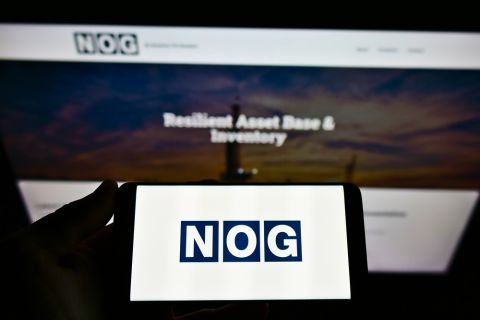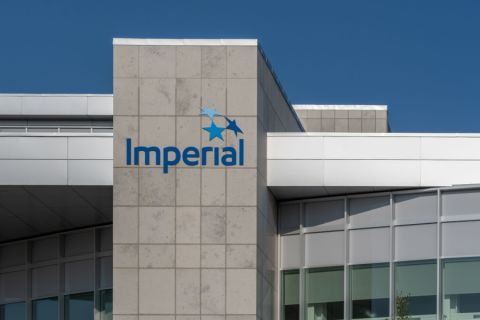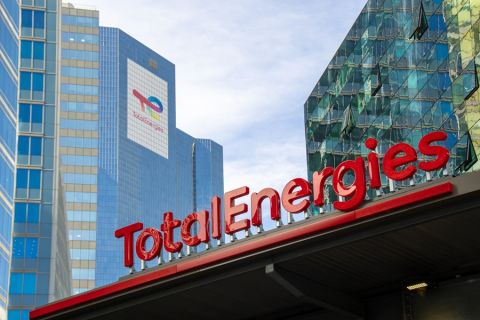For years when the offshore oil and gas industry spoke about new prospects and future development in the United States, the focus was almost exclusively on the Gulf of Mexico. This makes sense since energy production in the Gulf of Mexico has skyrocketed since the 1990s, reaching 1.6 million bbl of oil per day in 2005 and involving nearly half of all offshore structures in the world. For the past few years, though, advances in technology have led the industry to take a second look at the waters off Alaska, and with prospects in the Beaufort Sea, possible development in the Chukchi Sea and North Aleutian Basin, and existing development in Cook Inlet, the Gulf of Mexico is no longer the only US area generating buzz.
When looking at the waters offshore Alaska, we can take some important lessons from the
 |
|
| Figure 1. Map shows US Minerals Management Service Alaska Planning Areas for the next 5 years. |
The waters off of Alaska used to be written off as “just the frozen sea.” The harsh Arctic climate with its extreme temperatures resulting in iced-over oceans seemed to inhibit any investment in the areas. It would require huge investments of billions of dollars from industry first to develop the technology and then to find and produce hydrocarbons there. As with the Gulf of Mexico, though, we are seeing a renaissance in this area as the Congress and Administration have passed legislation extending deepwater royalty relief to federal waters off Alaska as well as other legislation and regulations to assist companies in overcoming extremely difficult conditions. And, once again, industry is rising to the challenge, developing the technologies to produce energy for the nation from an area nobody dreamed would be possible a couple decades ago.
Resources in OCS areas off Alaska
The industry has been producing energy from the North Slope of Alaska for more than 30 years now, and as much as 10% of our oil comes down the Trans-Alaska pipeline. At one time, as much as 2 billion barrels of oil flowed through the pipeline each day. Now, it is closer to 700 million bbl. And, during this time, industry has been forced to re-inject the gas it has discovered since there is not yet a pipeline to get the gas to market. The onshore Alaskan North slope fields hold 33 Tcf to 45 Tcf of discovered natural gas, and it is estimated by the National Petroleum Council to contain five times that amount in undiscovered reserves.
The estimates of offshore reserves are also promising. The Minerals Management Service estimates that the undiscovered, technically recoverable resources for the Beaufort Sea are 7 billion bbl of oil and 32 Tcf of natural gas, for the Chukchi Sea are15.4 billion bbl of oil and 76.8 Tcf of natural gas, for the North Aleutian Basin are 750 million bbl of oil and 8.6 Tcf of natural gas, and for Cook Inlet are 1 billion bbl of oil and 1.2 Tcf of natural gas. It is also understood that these estimates are very conservative since the Gulf of Mexico example has taught us that the agency has consistently had to re-evaluate and raise their estimates as new discoveries have been made and as technology has advanced to allow industry to reach more of the resources.
Industry is working to meet the challenge. By the first quarter of 2007, 84 wells had been drilled in the federal OCS off Alaska — 31 in the Beaufort, 4 in Chukchi, 6 in Norton Sound, eight in Navarin Basin, 10 in St. George Basin, 13 in Cook Inlet and 12 in the Gulf of Alaska.
The most recent sales have been in the Beaufort Sea, and industry has come back to Alaska for those sales. The industry responded to a Beaufort Sea lease sale in March of 2005 with the best turnout the Alaska office of the Minerals Management Service had seen since 1988. Sale 195 netted US $45 million in high bids for 117 leases. The companies with the most high bids were Shell, ConocoPhillips and Armstrong Oil. The next Beaufort Sale was scheduled for April of 2007 and put 8.7 million acres, encompassing 1,654 whole or partial blocks, up for lease. The sale area extended from the Canadian border on the east to near Barrow on the west.
Technology and investment
Exploring in the Arctic environment is not for the faint of heart. The expenses and technological challenges can be daunting. An endeavor there includes 3-D seismic that has to be conducted during a very short summer season, the need for ice-resistant structures, extended-reach drilling, flow-assurance technology and remote sensing. Drilling a single offshore well in the Arctic can cost as much as $100 million, and offshore processing facilities require investments of as much as $500 million.
Current offshore projects
The federal OCS off Alaska has several ongoing projects that are producing or are expected to produce energy that will make its way to the lower 48 states through the Trans-Alaska pipeline, a proposed natural gas pipeline, through other pipelines and by tanker.
The Cosmopolitan Project is located in southeast Cook Inlet. The unit encompasses 23,516 acres in both state and federal waters. There are two federal and eight state of Alaska leases, and operators ConocoPhillips, Devon and Forest Oil have drilled one extended-reach delineation well and are currently pursuing additional seismic studies.
The Northstar project, also on both state and federal lands, is currently producing. The total production from the unit over the past 6 years is well over 110 billion bbl of oil.
Shell owns 86 blocks encompassing 465,000 acres in the Beaufort Sea. The company has submitted an exploration plan to the Minerals Management Service and is planning to drill up to four exploration wells at the Sivulliq prospect during 2007 and additional prospects during 2008 and 2009.
The Liberty Unit is located in Foggy Island Bay in the Beaufort Sea and operated by BP. The development and production plan for this unit calls for ultra extended-reach drilling.
The next 5 years
The proposed leasing program for 2007-2012 was issued by the Minerals Management Service in August of 2006, and the final proposed program is expected to be issued in May of this year. The proposed program would allow for seven scheduled sales and two special sales in Alaska during the 5-year period. There would be a sale of Chukchi sea areas in 2007, a sale of Beaufort Sea areas in 2009, sales of Chukchi Sea areas and North Aleutian Basin areas in 2010, a sale of Beaufort Sea areas in 2011, and sales of Chukchi Sea and North Aleutian Basin areas in 2012. In addition, the plan would allow for “special” sales in the Cook Inlet area in 2009 and 2011. These sales will only occur if there is sufficient interest and response to an annual call for nominations by the agency.
There are several notable things about this proposed plan for OCS waters off Alaska. First, the Chukchi Sea is an area of great potential, particularly for natural gas, and the fact that there are regular sales scheduled there allows for a reliable schedule for an industry that will need to make substantial investments to find and harvest the area’s energy for the country. Second, the plan includes scheduled sales in the North Aleutian Basin. This is an area where leases were issued years ago and then bought back by the government. Companies have old data, using old technology. But, as happened in the Gulf of Mexico, they will now be able to adopt the new technologies to explore for and harvest hydrocarbons from this promising area.
It is also noteworthy that, once again, this renaissance is the result of both industry’s ingenuity in developing new technologies and government’s willingness to adopt policies to make this possible. The North Aleutian Basin used to be restricted by both a Presidential order withdrawing the area from leasing and Congressional appropriations moratoria prohibiting any pre-leasing or leasing activity. Both of those restrictions were lifted, first by the Congress 3 years ago and then by the president in January of this year.
It is important to remember that it takes technological advances, infusions of capital and good public policy-making to develop new resources. It was a vital combination in the Gulf of Mexico, and it will be essential to developing the country’s resources in the waters off Alaska. As we move forward with a new Congress (and in a year and a half we’ll have another new Congress and a new President) we must keep this important goal in mind.
Recommended Reading
NOG Lenders Expand Revolving Credit Facility to $1.5B
2024-04-30 - Northern Oil and Gas’ semi-annual borrowing-base redetermination left its reserved-based lending unchanged at $1.8 billion.
Imperial Oil Names Exxon’s Gomez-Smith as Upstream Senior VP
2024-04-30 - Cheryl Gomez-Smith, currently director of safety and risk at Exxon Mobil’s global operations and sustainability business, will join Imperial Oil in May.
Diamondback Stockholders All in for $26B Endeavor Deal
2024-04-29 - Diamondback Energy shareholders have approved the $26 billion merger with Endeavor Energy Resources.
TotalEnergies Eyes Suriname FID by Year-end 2024
2024-04-29 - France’s TotalEnergies and U.S. partner APA Corp. look to place their long lead orders ahead of a final investment decision related to their joint development offshore Suriname in Block 58.
ProPetro to Provide eFrac Services to Exxon’s Permian Operations
2024-04-29 - ProPetro has entered a three-year agreement to provide electric hydraulic fracturing services for Exxon Mobil’s operations in the Permian Basin.





